Volume 12, Issue 4
Displaying 1-11 of 11 articles from this issue
- |<
- <
- 1
- >
- >|
Review
-
2023Volume 12Issue 4 Pages 200-207
Published: 2023
Released on J-STAGE: October 16, 2023
Download PDF (1487K) -
2023Volume 12Issue 4 Pages 208-212
Published: 2023
Released on J-STAGE: October 16, 2023
Download PDF (359K) -
2023Volume 12Issue 4 Pages 213-221
Published: 2023
Released on J-STAGE: October 16, 2023
Download PDF (648K) -
2023Volume 12Issue 4 Pages 222-227
Published: 2023
Released on J-STAGE: October 16, 2023
Download PDF (766K) -
2023Volume 12Issue 4 Pages 228-238
Published: 2023
Released on J-STAGE: October 16, 2023
Download PDF (685K)
Original Article
-
2023Volume 12Issue 4 Pages 239-244
Published: 2023
Released on J-STAGE: October 16, 2023
Download PDF (694K) -
2023Volume 12Issue 4 Pages 245-258
Published: 2023
Released on J-STAGE: October 16, 2023
Download PDF (3639K) -
2023Volume 12Issue 4 Pages 259-267
Published: 2023
Released on J-STAGE: October 16, 2023
Download PDF (798K) -
2023Volume 12Issue 4 Pages 268-273
Published: 2023
Released on J-STAGE: October 16, 2023
Download PDF (531K) -
2023Volume 12Issue 4 Pages 274-280
Published: 2023
Released on J-STAGE: October 16, 2023
Download PDF (504K) -
2023Volume 12Issue 4 Pages 281-285
Published: 2023
Released on J-STAGE: October 16, 2023
Download PDF (963K)
- |<
- <
- 1
- >
- >|











